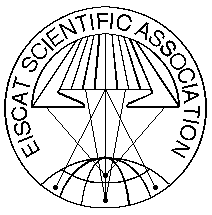
November 28 - December 02, 2011 - Namur, Belgium
Splinter - First Results of the SX5 Project
Single-Frequency VTEC Retrieval with GPS and Galileo
T. Schueler, O. Oladipo (University FAF Munich)
Tuesday, Nov 29, 16:30-18:30
SX5 is a project devoted to the scientific exploitation of Europe's Galileo E5 wideband signal and funded by the European Union (FP7) with applications in the fields of atmospheric parameter retrieval and precise positioning. Single-frequency ionosphere monitoring will be in the focus of this splinter meeting.
It is commonly believed that GNSS ionospheric delay estimation (or VTEC retrieval) essentially requires dual-frequency receivers. This claim is not true. In particular, the Galileo E5 signal is a distinct low-noise signal, and a combination of code range and carrier phase measurements can be successfully used in a single-frequency ionosphere monitoring algorithm. Both data from GPS and Galileo are supported. Single-frequency GNSS receivers are much cheaper than dual-frequency devices, so that the single-frequency VTEC monitoring approach can also be interesting from the commercial point of view.
This splinter session is devoted to the presentation and discussion of the single-frequency ionosphere monitoring method developed in the SX5 project. The following aspects are planned for this meeting:
- Introduction to single-frequency ionosphere monitoring with Galileo and GPS. Theory behind, data modelling, retrieval algorithm, adjustment procedure, sequential filter, separation of ionospheric delay information from ambiguity terms, GNSS signals and the benefit of Galileo E5 vs. GPS L1.
- Test cases and results, both using real-world GPS L1 and GPS L2 data as well as synthetic Galileo E5 broadband signal data. 2006 Greece earthquake example, October 2003 ionosphere storm test case, GPS L1 and L2 validation campaign using GPS high-rate data of the IGS network for more than 40 stations (VTEC RMS: 4 TECU global average, 1.5-2.5 TECU in mid-latitudes, 5-10 TECU for stations near geomagnetic equator).
- Comparison of retrieval results with ionosphere models such as IRI-2007 and NeQuick2 (a special version NeQuick G is foreseen as standard correction model for the Galileo satellite navigation system).
- Ionospheric data processing for SX5 project. (J. Boska, D. Kouba, J. Lastovicka, IAP, Prague, Czech Republic)
Back to the splinters-page.











